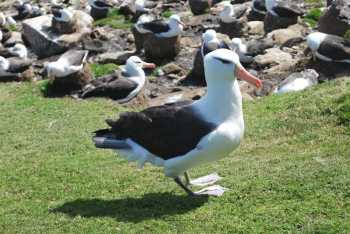Patricia Gandini of the Centro de Investigaciones de Puerto Deseado, Universidad Nacional de la Patagonia Austral, Argentina and colleagues in the same country have inspected a collection of drowned Black-browed Albatrosses Thalassarche melanophris from demersal longline fisheries operating within Patagonian Shelf waters in order to determine whether the overall external morphology of the birds varied with sex. Their findings have been published recently in the printed version of the South American journal El Hornero.

The paper´s summary follows:
"Black-browed Albatross displays little sexual dimorphism and although males are usually larger than females, sexing birds by direct observation is difficult. We evaluated sexual size dimorphism in this species and provided reliable method to predict the sex of measured birds. Discriminant analysis of six morphometric measurements of adult birds indicated that only three variables (bill depth, head width and nape) were the most accurate variables to use in a discriminant function model, predicting sex with 87% of reliability."
Reference:
Gandini, P., Frere, E., García, M.F. & Seco Pon, J.P. 2009. Sexual size dimorphism in Black-browed Albatross (Diomedea melanophris) incidentally killed during longline operations. El Hornero 24: 43-46.
Juan Pablo Seco Pon, ACAP South American News Correspondent, 25 November 2010

 English
English  Français
Français  Español
Español